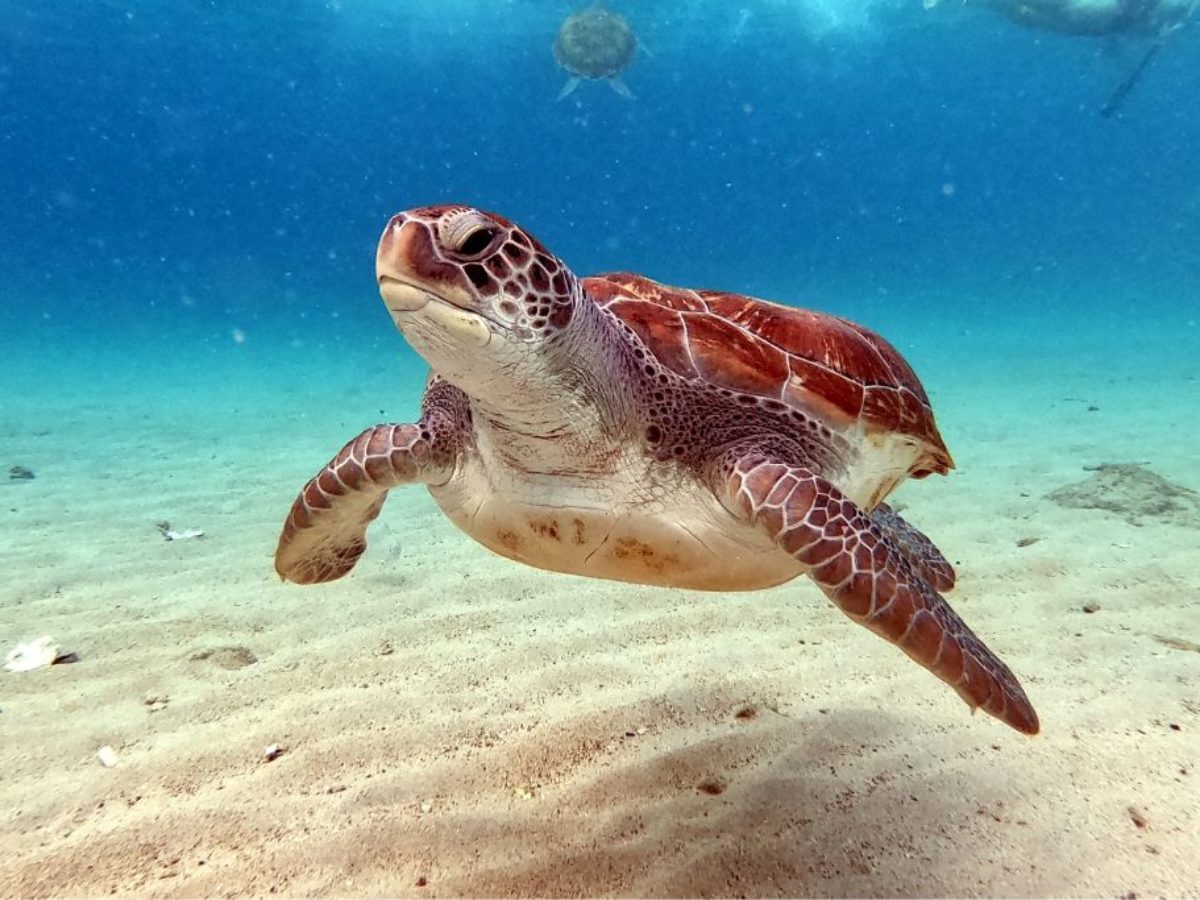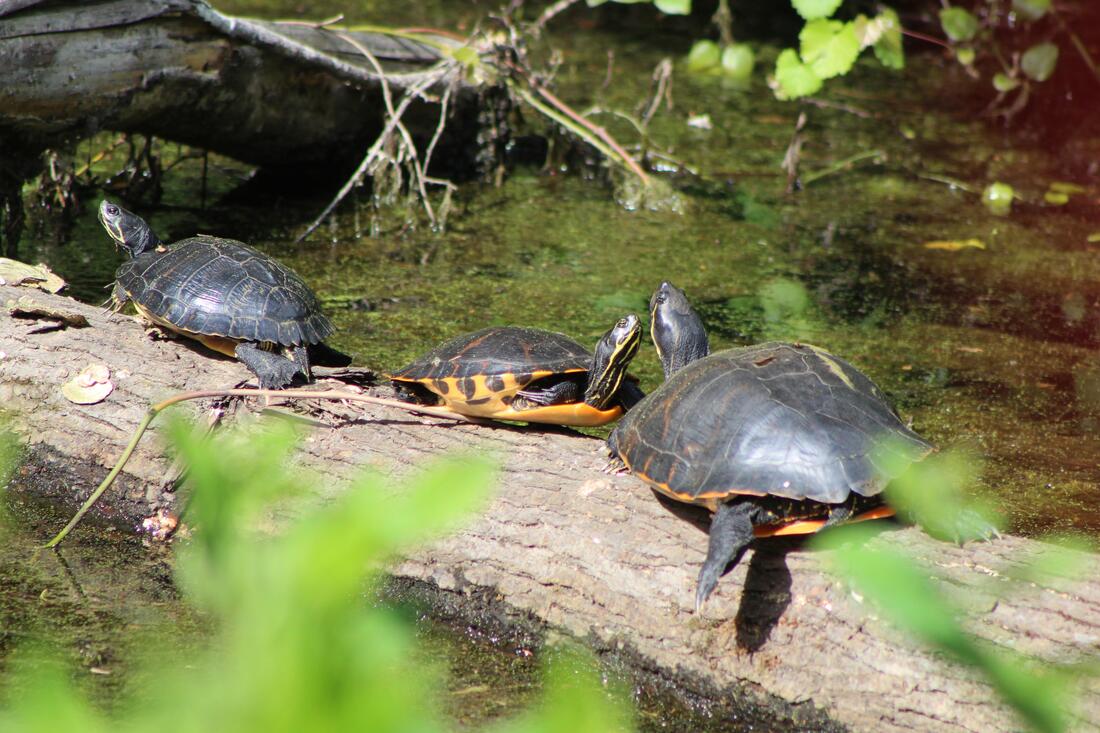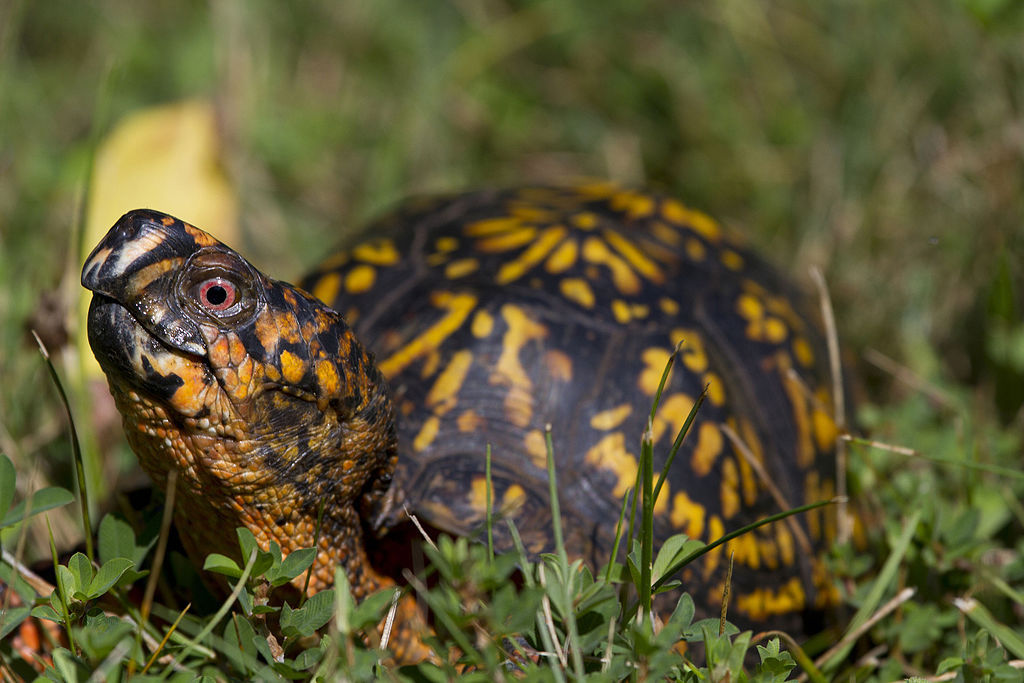Virginia is home to a diverse range of wildlife, including several species of turtles. With over 25 different types of turtles found in Virginia, it’s no surprise that these shelled creatures are a common sight in the state.
Freshwater turtles make up the largest group of turtles native to Virginia, with sea turtles also found along the coast. From the Eastern Chicken Turtle to the Coastal Plain Cooter, there are many different types of turtles to discover in Virginia.
You are reading: 7 Types Of Turtles In Virginia
In this article, we will explore seven of the most common types of turtles found in Virginia, including their physical characteristics, habitat, and behavior.

7 Types Of Turtles In Virginia
Eastern Chicken Turtle
The Eastern Chicken Turtle is a freshwater turtle found in Virginia. It is a medium-sized turtle with a carapace that has a reticulated yellow pattern on a dark brown to black background.
The scientific name of the Eastern Chicken Turtle is Deirochelys reticularia reticularia, and it belongs to the family Emydidae. The name “Deirochelys” is derived from the Greek word “deire,” which means “neck,” and “chelys,” which means “tortoise”. The Eastern Chicken Turtle is a basking turtle and is found in ponds, lakes, ditches, and cypress swamps.
Coastal Plain Cooter

The Coastal Plain Cooter is a large aquatic turtle found in Virginia. It is a newly described species, split from the River Cooter. The scientific name of the Coastal Plain Cooter is Pseudemys floridana, and it belongs to the family Emydidae.
The shell of the Coastal Plain Cooter is highly elevated, with the highest point located at the center of the carapace. The maximum carapace length of the Coastal Plain Cooter is 15.6 inches.
The Coastal Plain Cooter is a herbivorous freshwater turtle and is found in ponds, lakes, and other slow-moving bodies of water. The species is found within the southeastern coastal plain of the United States, from extreme southeastern Virginia southward through all of Florida and westward to the vicinity of Mobile Bay, Alabama.
Box Turtles

Box turtles are a group of terrestrial turtles found in Virginia. There are two species of box turtles found in Virginia: the Eastern Box Turtle and the Woodland Box Turtle. Here are some key facts about box turtles in Virginia:
Eastern Box Turtle
– Habitat: Eastern Box Turtles are found in many types of wooded areas, including hardwood forests, mixed oak-pine forests, pine flatwoods, and maritime oak forests.
– Conservation: Eastern Box Turtles are listed as a species of special concern in Virginia due to habitat loss and fragmentation, road mortality, and collection for the pet trade.
Woodland Box Turtle
– Habitat: Woodland Box Turtles are found in deciduous forests, mixed hardwood-pine forests, and forested wetlands.
– Conservation: Woodland Box Turtles are one of the most commonly encountered reptiles in Virginia, but they are still at risk due to habitat loss, road mortality, and collection for the pet trade.
Recently, Virginia has banned the ownership of box turtles as pets in an effort to protect wild populations. The Box Turtle Sanctuary of Central Virginia is a non-profit organization that works to rehabilitate lost box turtles and help them live their best lives.
If you encounter a box turtle in Virginia, you can report your sighting to the Virginia Herpetological Society to help improve our understanding of box turtles in the state.
Sea Turtles
Sea turtles are a group of marine reptiles that have existed on Earth for over 100 million years. There are seven species of sea turtles found in the world, and six of them are found in U.S. waters. The seven species of sea turtles are:
1. Flatback Sea Turtle: This species is found only in the waters of Australia, Papua New Guinea, and Indonesia.
2. Green Sea Turtle: This species is found in tropical and subtropical waters around the world.
3. Hawksbill Sea Turtle: This species is found in coral reefs and rocky areas in tropical and subtropical waters around the world.
4. Leatherback Sea Turtle: This species is the largest of all sea turtles and is found in all oceans except the Arctic and Antarctic.
5. Loggerhead Sea Turtle: This species is found in temperate and tropical waters around the world.
6. Kemp’s Ridley Sea Turtle: This species is the smallest of all sea turtles and is found in the Gulf of Mexico and along the Atlantic coast of the United States.
7. Olive Ridley Sea Turtle: This species is found in warm waters of the Pacific and Indian Oceans.
All seven species of sea turtles are listed as threatened or endangered under the Endangered Species Act. Sea turtles face many threats, including habitat loss, pollution, climate change, and accidental capture in fishing gear.
Conservation efforts are underway to protect sea turtles and their habitats, including beach monitoring programs, nest protection, and fishing gear modifications.
Softshells
Softshell turtles are a group of freshwater turtles that are known for their soft, flat, and rubbery shells. Here are some key facts about softshell turtles according to the search results:
– Softshell turtles belong to the family Trionychidae, which includes several turtle genera.
– Softshell turtles are found in Africa, Asia, and North America, with extinct species known from Australia.
– Softshell turtles lack hard shells and instead have tough, leathery skin.
– The edges of the carapace of softshell turtles are pliable with small spines, with males having more spines than females.
– Softshell turtles can adapt to living in highly brackish areas.
– Softshell turtles are called “softshell” because their carapaces lack the hard bony plates found in other turtle species.
Some of the species of softshell turtles found in North America include the spiny softshell turtle and the eastern spiny softshell turtle. Softshell turtles are important members of freshwater ecosystems and play a role in maintaining the balance of these ecosystems.
Tortoises
Tortoises are a group of reptiles that belong to the family Testudinidae of the order Testudines. Tortoises have a shell that protects them from predation and other threats, and like other members of the suborder Cryptodira, they retract their necks and heads directly backward into the shell to protect them.
Read more : 10 Species Of Monkey Breeds You Should Know
Tortoises are exclusively terrestrial and occur on all continents except Australia and Antarctica. Here are some key facts about tortoises according to the search results:
– Tortoises can vary in size with some species, such as the Galápagos giant tortoise, growing to more than 1.2 meters (3.9 ft) in length, whereas others like the Speckled cape tortoise have shells that measure only 6.8 centimeters (2.7 in) long.
– Tortoises are mostly herbivorous and eat foliage, flowers, and fruits.
– Tortoises have a long lifespan, with some species living up to 150 years.
– Tortoises are threatened by habitat loss, hunting, and collection for the pet trade.
– There are about 49 species of tortoises, and they range in size from the padlopers (Homopus) of southern Africa that are only a few centimeters long to the giant tortoises of the Galápagos Islands that can weigh over 500 pounds.
Tortoises play an important role in their ecosystems, and conservation efforts are underway to protect them and their habitats.
Eastern Painted Turtle
The Eastern Painted Turtle (Chrysemys picta picta) is a small aquatic turtle that is brightly marked. Here are some key facts about the Eastern Painted Turtle according to the search results:
– Habitat: Eastern Painted Turtles occur in all manner of aquatic habitats that have permanent water, including ponds, lakes, ditches, swamps, rivers, and creeks.
– Appearance: Eastern Painted Turtles have smooth shells that are brightly marked with red, yellow, and/or black patterns. Adults have shells that are about 4 to 7 inches long.
– Diet: Eastern Painted Turtles are omnivorous and eat a variety of aquatic plants, insects, and small animals.
– Range: The Eastern Painted Turtle is the most widespread native turtle of North America, and its range extends from southern Canada to northern Mexico, and from the Atlantic to the Pacific.
– Systematics: The Eastern Painted Turtle was originally described as Testudo picta by Johann Gottlob Schneider in 1783.
Eastern Painted Turtles are an important part of aquatic ecosystems and are commonly encountered in Virginia and other parts of North America.
FAQS
1. How many types of turtles are found in Virginia?
There are 25 different types of turtles found in Virginia, including both freshwater and sea turtles.
2. What are some of the types of freshwater turtles found in Virginia?
Some of the types of freshwater turtles found in Virginia include the Eastern Chicken Turtle, Coastal Plain Cooter, and Box Turtles.
3. What are some of the types of sea turtles found in Virginia?
Some of the types of sea turtles found in Virginia include the loggerhead, green, and Kemp’s ridley sea turtles.
4. Are box turtles legal to own as pets in Virginia?
No, Virginia has banned the ownership of box turtles as pets in an effort to protect wild populations.
5. What are some threats to sea turtles in Virginia?
Sea turtles face many threats in Virginia, including habitat loss, pollution, climate change, and accidental capture in fishing gear.
6. How can I help protect turtles in Virginia?
You can help protect turtles in Virginia by reporting turtle sightings to the Virginia Herpetological Society, supporting conservation efforts, and following guidelines for interacting with turtles in the wild.
Source: https://petstutorial.com
Category: Animals










